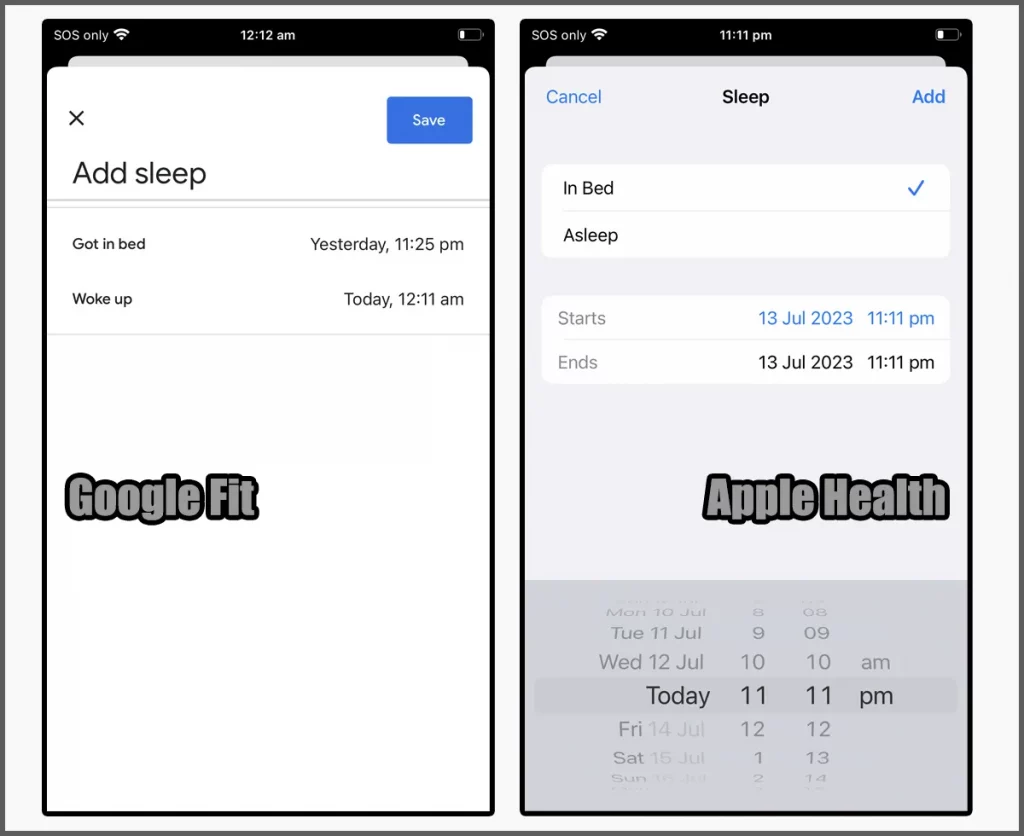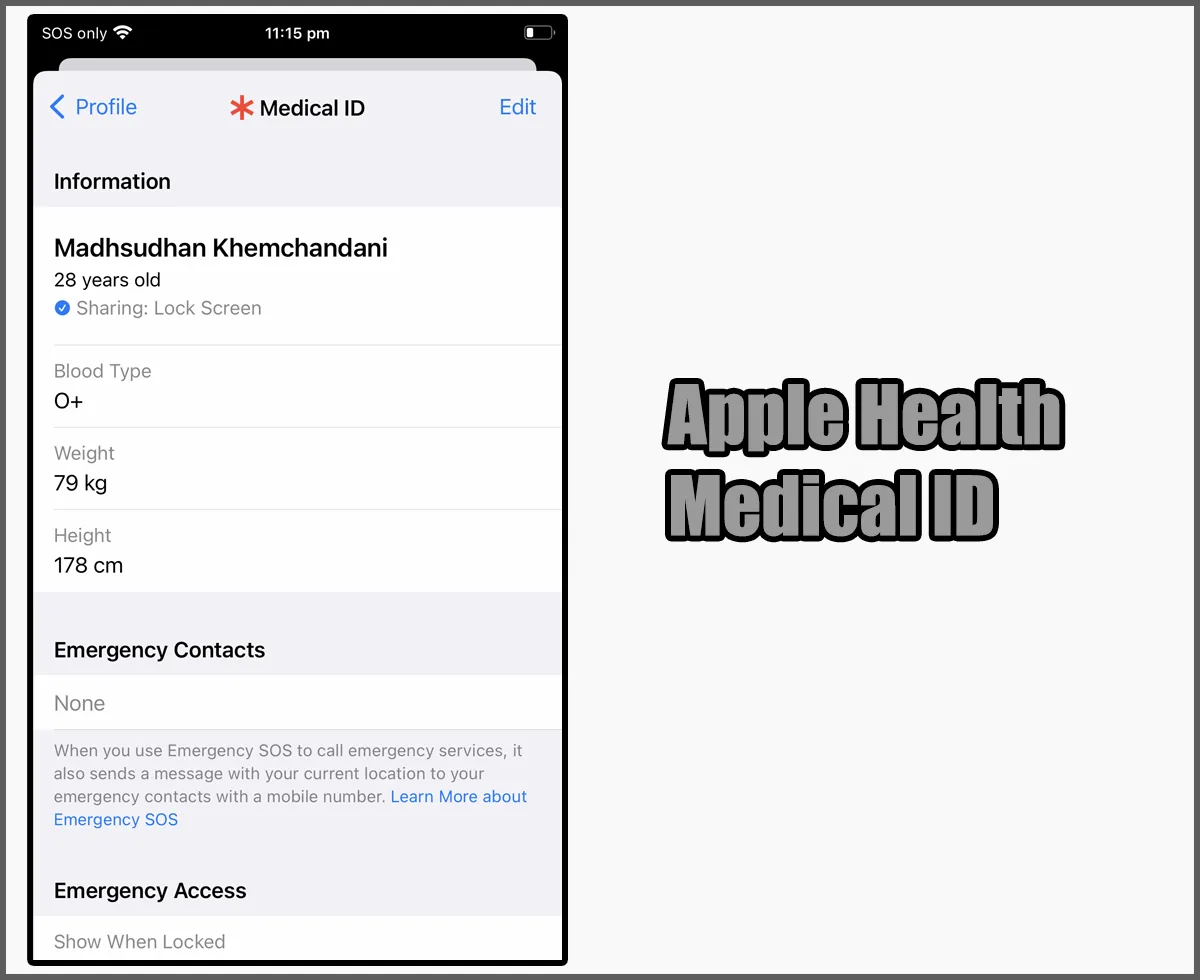Google Fit is from Google, and Apple Health is from Apple. We can’t install Apple Health on Android, but Google Fit is available for iPhones.
So, which is the winner when we compare Google Fit vs. Apple Health? Let’s find out.
What are both
Google Fit is a fitness app from Google available on both platforms. It supports tracking workouts, weight, period, and sleep. It also tracks steps on Android.
Apple Health is a health management app pre-installed on iPhone devices. It supports adding over 75 workouts and can connect with Apple Watches to sync additional data.
Step tracking

Google Fit on iOS does not track steps. You won’t see any movement even if you walk while the app is open.
However, you can connect Google Fit and Apple Health or Watch in the settings and see your step data.
This way, you will find almost the same step data in both apps. Apple Health automatically tracks your steps and walking distance.
Step tracking test
I tested Apple Health by walking 100 steps, and the app showed 99. This proves that Apple Health, like Samsung Health, is an accurate step counter.
Active goals

Google Fit uses a term called Heart Points to complete your weekly goal. You must score 150 points weekly to achieve it.
The points are designed with the help of the World Health Organization and the American Health Association to do your minimum weekly exercise.
For each minute walked, you get one point; for each minute exercised (more intense workouts like running and playing sports), you earn two points per minute. Apple Health does not use a similar system.
How both count calories

This is an interesting topic of Google Fit vs. Apple Health because Google Fit counts your calories.
It estimates your Basal Metabolic Rate (BMR) and active calories and shows the number on the main screen. I even tested it to see if it is accurate; you will find some interesting results there.
Apple Health, on the other hand, does not calculate your calories. To measure those, you must have a compatible device like one of the Apple Watches.
Google Fit vs. Apple Health: Sleep tracking

Apple Health is better in terms of sleep tracking. Both let you track your sleep and set sleep schedules, but Apple Health can check your screen off and on times to calculate your sleep timing and duration.
This is handy if you forget to add your sleep data. The app can also turn on Wind Down before you go to sleep to transition from awake to sleep.
Lastly, to have healthy routines, the app can set daily alarms to wake you at the wake-up time.
The Apple Watch can also measure enhanced sleep patterns and show in Apple Health.
Additional features
Workout tracking
Both do not count your workouts automatically, but you can add the data manually.
Google Fit supports over 100 workouts. You get to add the burned calories and steps data. The app also has a better exercise menu where each activity is categorized in alphabetic sections.
Apple Health supports over 75 exercises, with burned calories and duration options.
Heart rate tracking

Apple Health needs a compatible device, but Google Fit can track your workout using your camera. It lets you touch the camera lens to detect your pulse.
It can’t replace traditional heart monitors but can estimate the rough rate.
Medical ID (Apple Health)

Being the native fitness app, Apple Health has a Medical ID option that saves your personal information, including your name, age, blood type, height, and emergency contact in case of an emergency.
You can enable this data to be visible on the lock screen for others to see and take appropriate action.
Other activities
Apple Health users can track climbed floors, swimming strokes, standing minutes, periods, pushes, hearing, mobility, nutrition, and vitals.
Google Fit users can track their weight and periods, which are visible on the main screen.
Journal
Google Fit has a Journal tab where you see your data. The Journal keeps track of every single entry. You can view and share those entries with friends.
Compatible platforms
Even though Google has introduced Google Pixel Watches, they don’t use Google Fit. They use Fitbit software.
It, however, can be connected with other apps, such as food tracking and fitness apps.
The app can also connect with Apple Health and get and display your health data.
Apple Health has basic features, such as step and workout tracking. To count your calories, move minutes, heart rate, etc., you must get an Apple Watch.
Summary
Apple Health is an ordinary fitness app perfect for tracking your steps and sleep. It does sleep tracking much better than its opponent.
It’s limited without the watch, such as missing calories and active energy minutes, but enough to help you begin your journey.
Google Fit needs more time because it can’t track steps or workouts. If you like its interface, you can connect it to Apple Health and track your data.
However, other than heart Points and heart rate checks, it provides no additional value. Its journal-keeping is good, and if you want to see your workout history, you can give this app a go.
Check out my Apple Health and Samsung Health comparison next to see which wins.
Google Fit vs. Apple Health: Links
Madhsudhan Khemchandani has a bachelor’s degree in Software Engineering (Honours). He has been writing articles on apps and software for over five years. He has also made over 200 videos on his YouTube channel. Read more about him on the about page.
